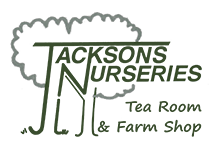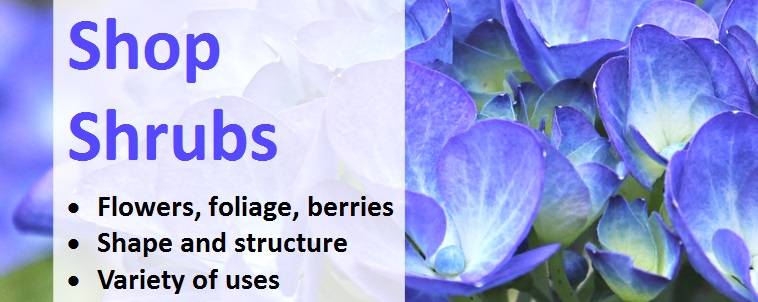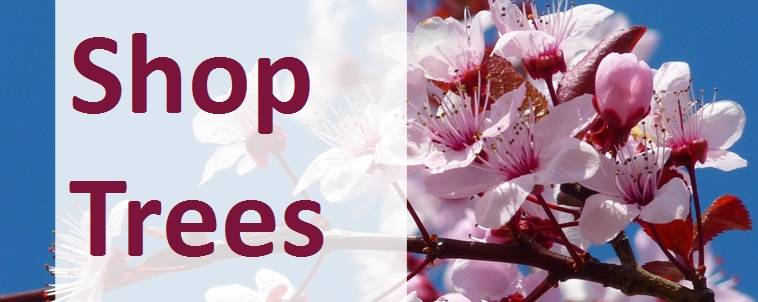Check Here Before Buying – Pot Size Matters...Not all websites offer the same. Plants in a 2-litre pot have twice the root system of a P9 or 1 litre pot.
How many shrubs and trees do I need?
Landscape Architects and Nurserymen often determine the quantity of plants required by considering the spread of the variety after 10 years. Often the guidelines for height and spread are a guide only, in the south and areas affected by the gulf stream plants will grow larger and in colder more exposed parts average sizes can be up to 15% less.
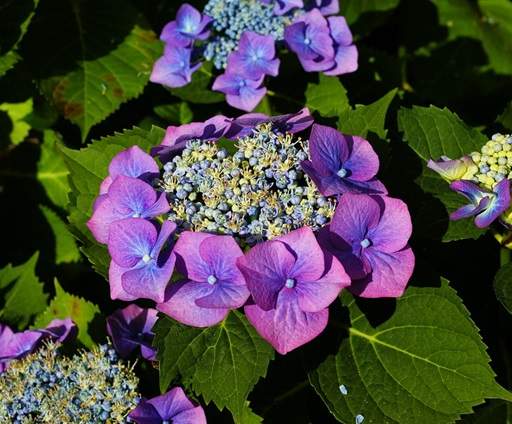
Most plants supplied by Jacksons are in 2 or 3 litre pots (except trees & specimens) so the following guide can be used to calculate spread after 10 years.
| Spread of Plant | Spacing | Northern & Exposed Sites |
| 0.5m | 400mm | 300mm |
| 0.6m | 500mm | 400mm |
| 0.7m | 500mm | 500mm |
| 0.8m | 600mm | 500mm |
| 0.9m | 700mm | 600mm |
| 1.0m | 800mm | 600mm |
| 1.2m | 1100mm | 600mm |
| 1.3m | 1200mm | 600mm |
| 1.4m | 1200mm | 600mm |
| 1.5m | 1300mm | 600mm |
| 1.6-3.0m | 1300mm | 700mm |
Given the above guide to planting centres based on the spread of the plant after 10 years, the number of plants per m² can be calculated using the following table.
| Centres | Number of Plants | Centres | Number of Plants |
| 350mm | = 8.16/m²* | 800mm | = 1.56/m² |
| 400mm | = 6.25/m² | 1100mm | = 0.83/m² |
| 500mm | = 4.00/m² | 1200mm | = 0.69/m² |
| 600mm | = 2.78/m² | 1300mm | = 0.59/m² |
| 700mm | = 2.04/m² | 1500mm | = 0.44/m² |
So, if a small growing plant is expected to achieve 0.5m spread after 10 years it will require planting at 400mm centres and therefore 6.25 plants per square metre will be required.
How many trees do I need to plant an avenue of trees?
Tree spacing generally depends on the size of the tree and can be varied dependant on required effect. To plant a line of trees the following is a guide only :-
| Size of Tree | Spacing |
|
Medium Tree |
4 metre 5 metres 7 to 9 metres |
How many native trees & shrubs do I need to plant a copse or woodland?
Copse & woodland plantings are generally planted using a selection of tall and medium sized growing trees and an understory of native shrubs, generally at 1 per m². All plants are normally supported and protected from rabbits using tree and shrub shelters or canes & spirals. After approximately 5 years, the best of the trees & shrubs are kept and the rest are removed if required, leaving the chosen density dependant on final envisaged use and required access.
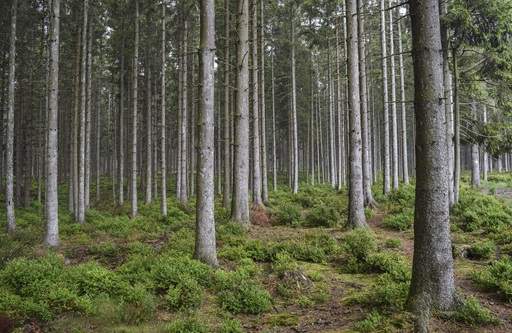
A typical native woodland varies in species dependant on location and age. Some species are often considered native that were introduced. Species would usually be planted in same species groups of 7-15 plants. In very general terms, a native woodland may consist of :-
| Native Woodland Mix: - | Under Planted with: - |
| Alder | Field Maple |
| Ash | Hazel |
| Birch | Hawthorn |
| Beech | Holly |
| Wild Cherry | Sloe Berry |
| Scots Pine | Wild Rose |
| Oak | Elder |
| Mountain Ash | Guelder Rose |
| Small Leaf Lime |
Share this page:
